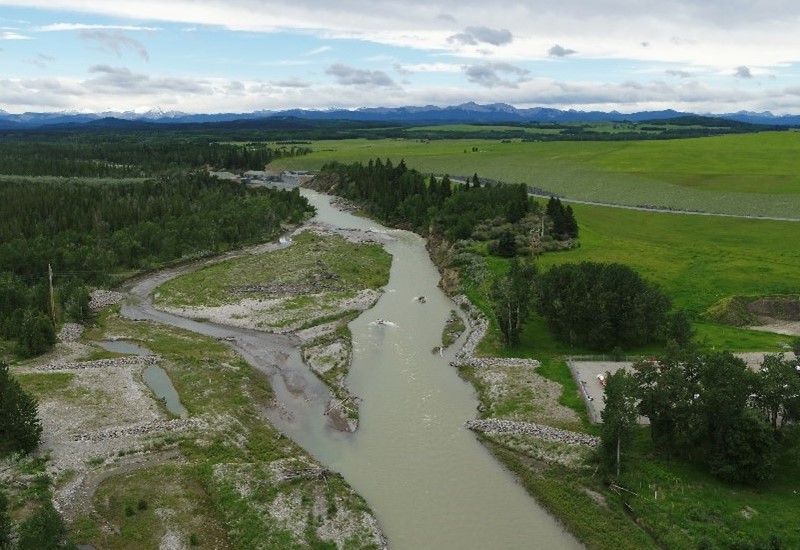The Springbank Off-stream Reservoir is currently under construction west of Calgary to help protect Calgary and other downstream communities from future floods. The reservoir will be constructed as a dry reservoir, meaning that it will only store water in emergencies, not year-round. This means much of the land within the reservoir can be used for purposes other than flood management most of the time.
The Alberta government has created a draft land-use plan based on discussions with local community groups, First Nations and others. All Albertans are now able to provide input on this plan and share their thoughts on how they think this land should be used when the reservoir isn’t full of water.

The Elbow River at the Springbank Off-stream Reservoir Project site. Credit: Alberta Transportation
“The Springbank Off-stream Reservoir is critical to protecting Calgary and other communities from future floods, but there are other uses too. This is a unique dam, and we want to hear your thoughts on how these lands should be used when not flooded. I look forward to hearing from Indigenous communities and all Albertans over the next four weeks.”
In most years, the dry reservoir land will be available for purposes other than flood mitigation or related operational activities. Under the draft plan, First Nations would have priority access for the exercise of treaty rights and traditional uses and the public would have secondary access for uses such as non-motorized recreation activities when the reservoir is dry.
The Springbank Off-stream Reservoir land-use plan review will be open until March 17. After that, the government will review all the input Albertans have provided and develop a finalized plan to guide future land use in the reservoir, once complete.
Quick facts
- Construction of the Springbank Off-stream Reservoir (SR1) began in spring 2022 and is expected to be complete in 2025.
- The Government of Alberta is investing a total of $744 million to construct the SR1. The Government of Canada also contributed $168.5 million to the project.
Related information
- Springbank Off-stream Reservoir land-use plan engagement
- Springbank Off-stream Reservoir project homepage